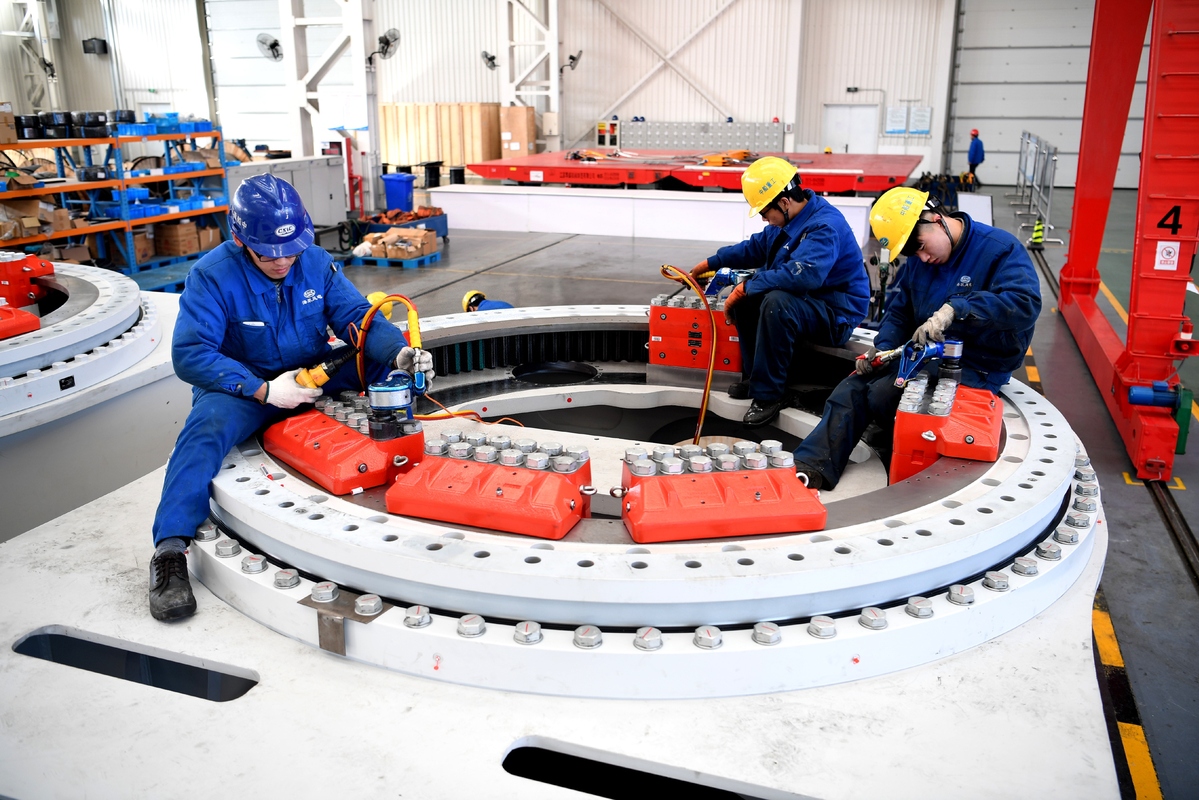Comprehensive SOE reform launched in pilot areas
China has launched comprehensive reform of state-owned assets and state-owned enterprises (SOEs) in pilot areas of Shanghai, Shenzhen and Shenyang, according to the country's top state asset regulator.
China has launched comprehensive reform of state-owned assets and state-owned enterprises (SOEs) in pilot areas of Shanghai, Shenzhen and Shenyang, according to the country's top state asset regulator.

Employees from a subsidiary of China Shipbuilding Industry Corp install clean-energy equipment in Nantong, Jiangsu province. [Photo/Xinhua]
By 2022, the areas are expected to be the "high ground" of the reform, which will feature strong leadership of the Communist Party of China, highly-efficient supervision, fully-energized SOEs and all-round implementation of national strategies, the State-owned Assets Supervision and Administration Commission (SASAC) of the State Council said.
The three cities are required to carry out reforms with different priorities and offered policy headroom to combine top-level system design with primary-level innovations to forge maximum reform momentum.
Shanghai's pilot reform will focus on improving state asset management, retooling the authorized management of state-owned capital and stimulating the self-motivation of SOE employees.
Shenzhen will center its reform on improving the efficiency of state-owned capital and enhancing the vitality of SOEs while focusing on establishing a state-owned assets management system and a state-owned enterprise management mechanism that meet the requirements of the socialist market economy.
For Shenyang, the reforms are mainly about revitalizing northeastern China's old industrial base, swift and steady mixed-ownership reshuffle and stronger vitality as well as risk resistance of the state-owned economy.
From 2013 to 2018, the total assets of the enterprises under the supervision of the SASAC surged from 85.4 trillion yuan (about US$12.4 trillion) to 180.7 trillion yuan, with an annual growth rate of 16.2%.
During the period, their combined profits jumped from 2.2 trillion yuan to 3.4 trillion yuan last year, an average annual growth of 9.3%.

